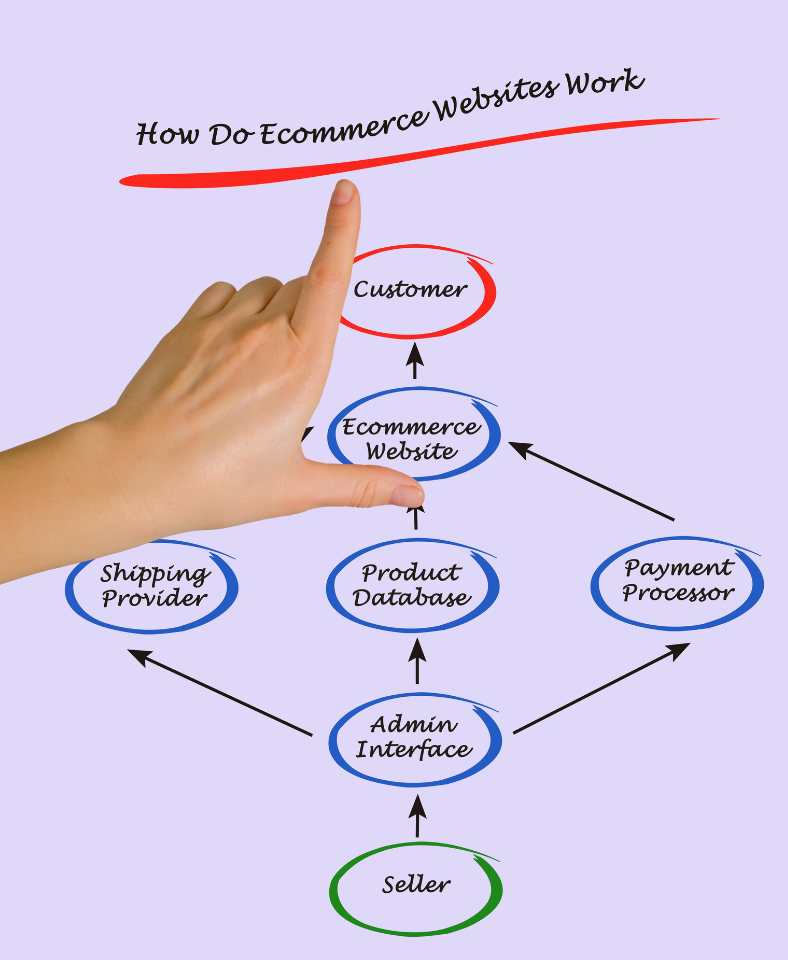Your digital transformation partners!
Get In Touch
+91 9225117897
info@goodmansvision.com
Savarkar Nagar, Nashik, Maharashtra, India
Building a Successful eCommerce Website Key Considerations and Best Practices
Stellar Website Design and Superior User Experience (UX)
The foundation of an exceptional eCommerce website lies in its design and user experience (UX). A captivating aesthetic, intuitively designed navigation, consistent branding across the site, lightning-fast page loading times and streamlined checkout process are integral to establishing an appealing digital presence. The utilization of responsive design principles ensures optimal UX across various devices, including desktops, tablets, and mobiles, which now account for more than half of all global website traffic (2) . On a technical level, this involves lean database management, effective caching systems, responsive web design, and smooth integration of user-friendly payment gateways.
Personalized User Accounts
Personalized user accounts can significantly enhance customer engagement. These accounts allow customers to manage their profiles, track order history, save favorite products, and manage payment methods, ultimately leading to increased customer retention and loyalty.
Efficient Order Management System
A well-structured order management system is vital for the efficient tracking and management of orders, inventory, and shipments. Implementing such a system can ensure the seamless operation of the eCommerce platform and enhance customer satisfaction by providing real-time updates on order status.
Streamlined Shopping Cart and Checkout Process
The shopping cart and checkout process should be streamlined and user-friendly, allowing customers to review and adjust their selected products effortlessly. The checkout process should support guest checkouts to enhance conversion rates. Offering multiple payment options, including credit/debit cards, digital wallets, and bank transfers, and supporting international payments increase conversion rates. Further, integrating with popular gateways such as Stripe, PayPal, and Square can simplify transactions and boost consumer confidence.
Comprehensive Product Catalog and Advanced Search Functionality
A comprehensive product catalog is vital; complete with detailed descriptions, high-quality images, and transparent pricing. This serves as the backbone of the shopping experience. Moreover, an advanced search function, potentially incorporating AI and machine learning for predictive searches and natural language processing, can significantly enhance product discoverability and overall user satisfaction.
Streamlined Shopping Cart and Checkout Process
The shopping cart and checkout process should be streamlined and user-friendly, allowing customers to review and adjust their selected products effortlessly. The checkout process should support guest checkouts to enhance conversion rates. Offering multiple payment options, including credit/debit cards, digital wallets, and bank transfers, and supporting international payments increase conversion rates. Further, integrating with popular gateways such as Stripe, PayPal, and Square can simplify transactions and boost consumer confidence.

Robust Security and Scalability
Given the escalating number of data breaches globally, robust security measures are non-negotiable. In 2022 alone, the United States saw 1,291 data breaches with over 155.8 million individuals affected (2). Implementing HTTPS, two-factor authentication, and ensuring compliance with PCI-DSS standards are essential to safeguarding sensitive customer data and maintaining consumer trust. Equally crucial is the capacity to scale efficiently to accommodate traffic surges, achieved through flexible cloud infrastructure and clean, efficient code.
Supply Chain Integration
An eCommerce site’s success also hinges on effective supply chain integration. This involves real-time inventory management, automated order fulfillment, and streamlined returns processing. A robust ERP (Enterprise Resource Planning) system can make this process seamless and efficient.
Exceptional Customer Service Tools
Exceptional customer service is key to building a loyal customer base. This involves multiple communication channels, swift issue resolution, and a transparent returns process. Implementing tools such as FAQs, live chat, dedicated customer support channels, AI-powered chatbots and CRM (Customer Relationship Management) systems can resolve customer queries promptly, leading to increased customer satisfaction and repeated business.

SEO Optimization and Mobile Readiness
In the digital world, visibility is key, and SEO is the gatekeeper. A well-optimized site uses SEO-friendly URLs, detailed product descriptions, relevant metadata, and adheres to web standards for optimal indexing by search engines. Additionally, in an era where more than half of internet traffic comes from mobile devices (3), so a mobile-first approach is essential. This includes responsive web design, mobile-optimized images, touch-friendly navigation, and simplified checkout processes. Technologies such as AMP (Accelerated Mobile Pages) and PWA (Progressive Web Apps) can further enhance the mobile shopping experience.
Personalization, Data-Driven Insights and Marketing Tools
Leveraging personalization can significantly boost customer retention. This involves AI-driven product recommendations, customized offers, and targeted marketing campaigns. Concurrently, data analytics are essential for gaining insights into customer behavior and tracking key performance indicators (KPIs). Leveraging analytical tools like Google Analytics can yield valuable insights into customer behavior, website performance, and key performance metrics, informing data-driven business strategies. Simultaneously, integration with email marketing services, social media platforms, and programmatic advertising can drive customer acquisition and retention.
In conclusion, building a successful eCommerce website requires a comprehensive understanding of numerous critical areas, from UX design and SEO optimization to payment gateway integration and supply chain management. At Goodmans Vision, we excel in crafting comprehensive eCommerce solutions that encapsulate all these facets. Our expertise and services empower businesses to build robust, scalable, and customer-centric eCommerce platforms, exceeding expectations and delivering exceptional results.
Explore the future of eCommerce with Goodmans Vision, write to us with your requirements today!
References:
(1) Statista Research Department, “Retail e-commerce sales worldwide from 2014 to 2023”
(2) Statista Research Department, “Number of data breaches in the United States from 2013 to 2019, by industry”
(3) J. Clement, “Percentage of all global web pages served to mobile phones from 2009 to 2020”

Small Business Grow faster With Our Consulting Services

Subscribe
Join us! Our Newsletter will keep you updated!

